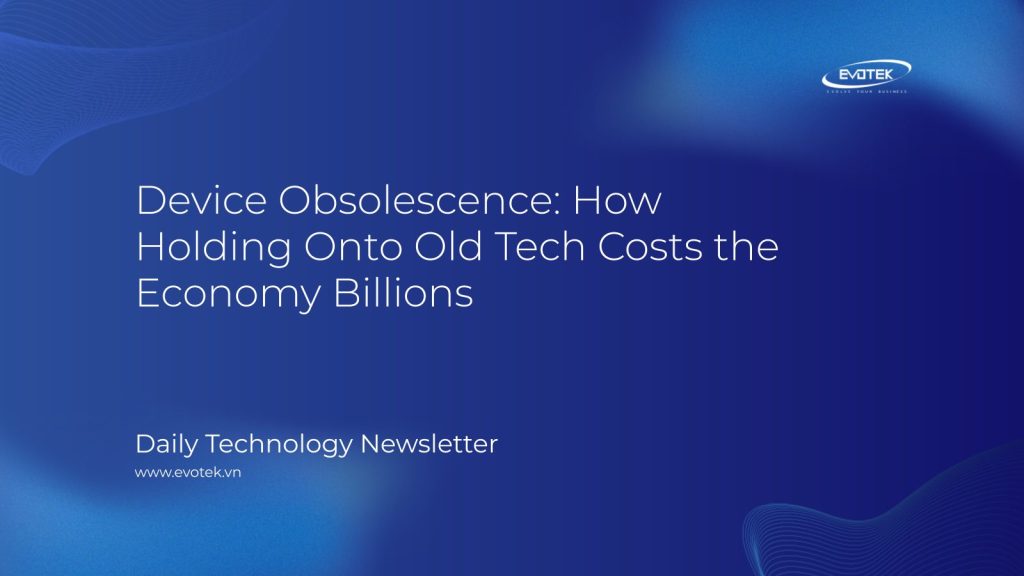In an age of rapid technological advancement, many Americans are choosing to extend the lifespan of their smartphones, computers, and other electronic devices. While this might seem like a fiscally responsible decision for individuals, a growing body of evidence suggests that this trend, particularly within businesses, is creating a significant drag on economic productivity and innovation.
Consider Heather Mitchell, a 69-year-old retiree from Tucson, Arizona, who proudly uses a six-year-old Samsung Galaxy A71. “It’s hanging in there surprisingly well for a jalopy,” she states, acknowledging minor issues but prioritizing affordability. Her sentiment echoes that of many consumers: the average American now keeps their smartphone for 29 months, a notable increase from 22 months in 2016, according to a recent Reviews.org survey.
The Hidden Costs of Aging Technology
While individuals like Mitchell save money in the short term, the economic consequences of widespread device retention are far-reaching. The Federal Reserve’s recent research highlights a critical correlation: each additional year companies delay equipment upgrades translates to a productivity decline of approximately one-third of a percent. Investment patterns account for about 55% of productivity gaps between advanced economies. In fact, if European businesses had matched U.S. investment patterns since 2000, productivity gaps with economic powerhouses like the UK, France, and Germany could have been dramatically reduced.
“Lost productivity and inefficiency are the unintended consequences of people and businesses clinging to aging technology,” says Cassandra Cummings, CEO of Thomas Instrumentation. She points to the stark difference in internet speeds over the past decade – from 100MB to 1GB – and the inability of older hardware to cope. This not only hinders individual performance but also strains nationwide networks, which must operate with backward compatibility, often throttling speeds to accommodate older, slower devices.
The Enterprise Lag: Businesses Falling Behind
The problem is exacerbated in the corporate world. Jason Kornweiss, Senior Vice President of Advisory Services at Diversified, observes a widening gap between consumers and businesses regarding device upgrades. Corporations, especially larger ones, struggle to keep pace with rapid technological evolution. IT departments face challenges in vetting and deploying new technology, leading to prolonged device lifecycles that impede productivity and innovation.
Diversified’s research reveals the human cost: 24% of employees work late or overtime due to aging technology issues, and a staggering 88% report that inadequate workplace tech stifles innovation. The comfort of familiarity with old devices often trumps the desire for productivity gains, creating a “productivity drag” that impacts the bottom line.
Towards a Sustainable Solution: Repair, Refurbish, and Lease
Experts suggest that a shift in approach is needed. Cummings advocates for more repairable and modular device designs, reducing the need for complete replacement. “I’m not a fan of the throw-away culture we have these days,” she states, questioning the economic benefit if it burdens individuals and small businesses.
Steven Athwal, CEO of UK-based refurbished phone specialist The Big Phone Store, agrees. He argues that device longevity itself isn’t the problem; it’s the attempt to run modern workloads on outdated hardware. Athwal envisions a “sustainable circular economy” where governments and big tech support refurbishment through extended software support, better access to parts, and treating repair as critical infrastructure. This would reduce the constant pressure for costly upgrades.
For businesses, Kornweiss suggests alternatives like “Bring Your Own Device” (BYOD) policies or leasing programs to manage technology refresh cycles more effectively. While consumer demand for the latest innovations, like Apple’s iPhone 17 and emerging AI capabilities, continues to drive upgrades, the broader economic health depends on a more strategic approach to device lifecycle management.
Najiba Benabess, Dean of the Business School at Neumann University, emphasizes that while keeping devices longer might seem financially or environmentally responsible, “the hidden cost is a quieter erosion of economic dynamism and competitiveness.” Addressing this challenge requires a concerted effort to balance individual savings with national productivity, fostering an environment where technology empowers, rather than hinders, progress.

 日本語
日本語 한국어
한국어 Tiếng Việt
Tiếng Việt 简体中文
简体中文